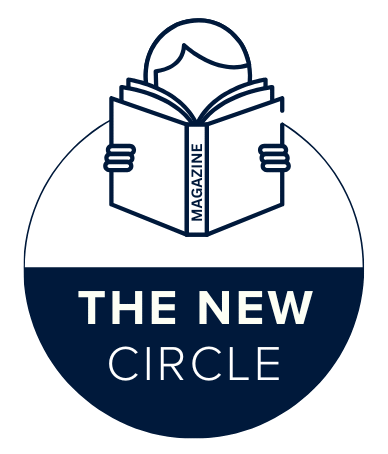Every Thursday at 2 PM, Barbara reviews Mr. Henderson’s quarterly visit notes. She codes his diabetes, his hypertension, his COPD. She submits her work and moves on. What she doesn’t know: Mr. Henderson’s nephrologist documented stage 4 chronic kidney disease three months ago. That’s a $10,000 HCC she’ll never find because our risk adjustment coding workflow guarantees she won’t.
This isn’t a Barbara problem. It’s happening hundreds of times across your organization right now. Your coders are missing massive value, not because they’re incompetent, but because your workflow is designed for failure.
The Silo Catastrophe
We’ve built coding workflows that mirror our organizational silos, and it’s costing us millions. Primary care coders review primary care notes. Specialist encounters go to different coders (if they get reviewed at all). Hospital admissions land in another queue entirely. Nobody sees the full picture.
Last week, I tracked a single patient through our coding system. Mrs. Rodriguez saw her PCP in January (coded by Team A), her cardiologist in February (Team B when they got to it in April), and was hospitalized in March (Team C reviewed it in June). Three teams, three different times, zero coordination. The cardiologist documented heart failure. The hospital confirmed it with ejection fraction. The PCP never mentioned it. Guess what got coded? Just the diabetes from the PCP visit.
The handoff disasters multiply the problem. When Team A has questions about specialist documentation, they can’t ask Team B because Team B hasn’t reviewed it yet. When Team C finds hospital diagnoses that contradict outpatient coding, there’s no mechanism to reconcile. We’ve created a coding assembly line where nobody can see beyond their station.
The technology makes silos worse, not better. Different teams use different systems. Primary care coding happens in one platform, specialist reviews in another, hospital coding in a third. Even if Barbara wanted to check Mr. Henderson’s nephrology notes, she literally can’t access them from her workstation.
The Context Blindness
Your coders are working in darkness. They see individual encounters without medical history, recent labs, or specialist consultations. They’re coding snapshots without seeing the movie.
I sat with a coder reviewing a routine follow-up note. “Patient stable, continue current medications.” That’s all it said. What the coder couldn’t see: the medication list included three antipsychotics (indicating serious mental illness), the previous note mentioned “recent psychiatric hospitalization” (major depressive disorder, severe), and the specialist notes described “treatment-resistant depression.” Without context, she coded nothing. With context, that’s $15,000 in missed HCCs.
The time blindness is equally damaging. Coders review January encounters in March, July encounters in September. By the time they see the documentation, they can’t remember if they’ve coded this member before, what conditions were previously captured, or whether this is new information or redundant. So they code conservatively, missing opportunities or duplicating work.
We pretend training fixes context blindness. “Learn the common patterns,” we tell coders. But patterns without patient history are just guesses. That elderly patient with minimal documentation might have extensive specialist care you’re not seeing. That young person with vague symptoms might have rare conditions documented elsewhere. Without context, even experienced coders are just gambling.
The Visibility Revolution
We transformed our coding accuracy by 40% with one simple change: every coder sees everything. Not eventually. Not partially. Everything, immediately.
Now when Barbara reviews Mr. Henderson’s PCP visit, she sees a sidebar showing recent specialist visits, hospital admissions, and previously coded conditions. She doesn’t need to review the nephrology notes in detail, but she sees “CKD Stage 4 documented by nephrology 3/15.” That triggers deeper review. The $10,000 HCC gets captured.
The member timeline changed everything. Instead of coding encounters, we code members. Every interaction displays chronologically. Patterns emerge. That depression that seemed new? Actually documented six times over two years. That kidney disease that appeared sudden? Progressive deterioration visible across quarters. Context transforms accuracy.
Real-time collision detection prevents duplicate work and conflicting codes. When two coders touch the same member, they see each other’s work instantly. When hospital coding conflicts with outpatient, alerts fire immediately. The left hand finally knows what the right hand is doing.
The Integrated Workflow
Stop assigning work by encounter type. Assign by member. One coder owns Mrs. Rodriguez completely: primary care, specialists, hospital, everything. They see the full story, not scattered chapters.
This sounds inefficient until you measure results. Integrated coders process fewer total charts but capture 60% more HCCs. Why? Because they stop re-learning the same members. They understand patterns. They know where to look. They become member experts, not encounter processors.
The pushback was fierce initially. “Specialists notes are too complex for primary care coders.” Nonsense. With proper tools and training, any competent coder can identify HCCs in specialist documentation. “Hospital records take special expertise.” Only because we’ve made them mysterious. They’re just detailed medical notes.
Build review triggers, not rigid workflows. When Barbara sees any encounter, the system flags related documentation: “Recent cardiology note available,” “Hospital admission last month,” “Nephrology documented new conditions.” She doesn’t review everything, but she knows what exists.
You can start this transformation Monday. Pick five high-value members. Assign each to one coder completely. Give them access to everything: every note, every lab, every specialist report. Watch what they find compared to your siloed approach. The difference will fund your entire workflow transformation.
Your coders aren’t failing. Your workflow is failing them. Stop forcing talented professionals to work blindfolded, then wondering why they keep missing obvious opportunities. Give them visibility, context, and ownership. The same coders you’re frustrated with today will become the ones finding millions in value tomorrow.
YOU MAY ALSO LIKE: Legacy System Security: Why Outdated Technology Is Your Biggest Cyber Risk

